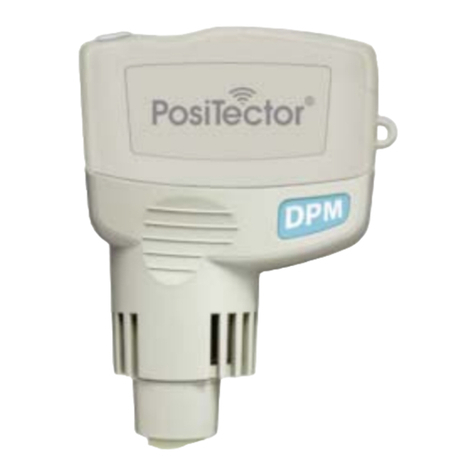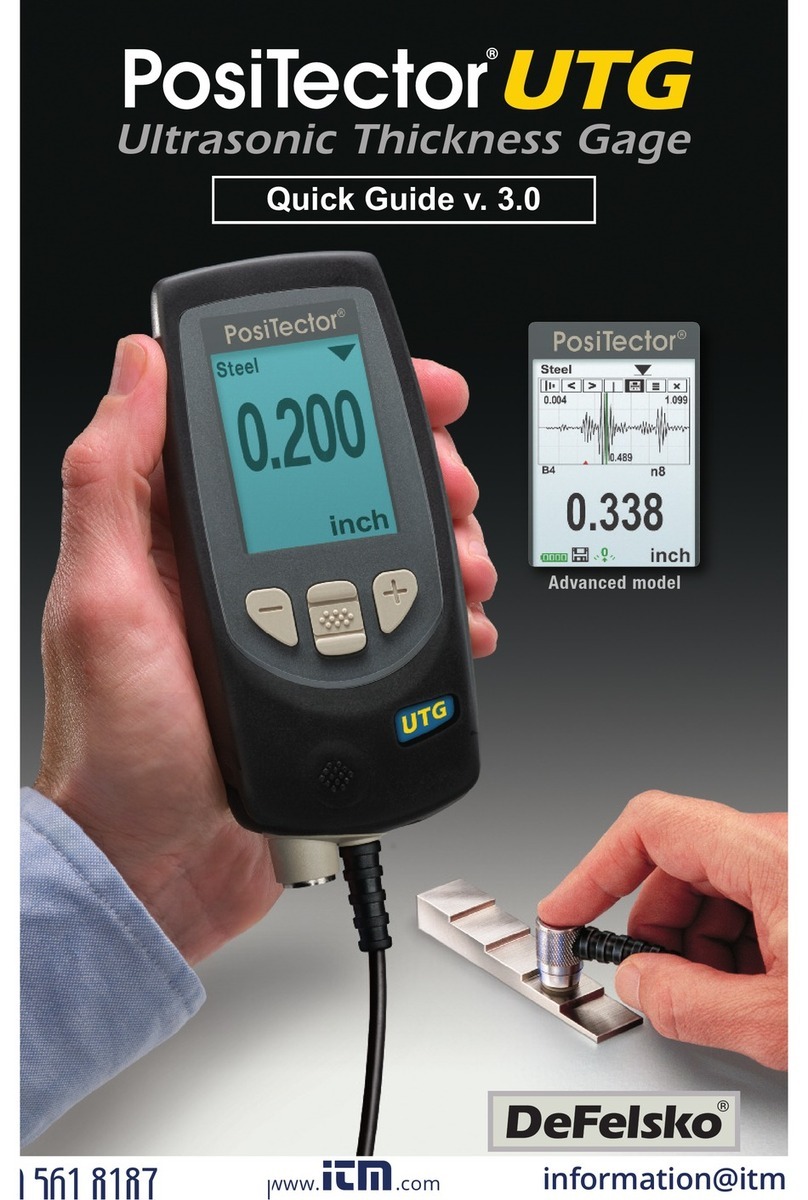
7
Calibration, Verification & Adjustment
Calibration, Verification & Adjustment
PosiTector 6000 probes non-destructively measure the thickness
of coatings on metals. Three steps ensure best accuracy
1. Calibration - typically done by the manufacturer. All probes
include a Certificate of Calibration.
2. Verification - typically done by the user on known reference
standards such as plastic shims or coated thickness standards.
3. Adjustment - to a known thickness
Calibration
Calibration is the high-level, controlled and documented process of
measuring traceable calibration standards over the full operating
range of the probe, and verifying that the results are within the
stated accuracy of the probe. Calibrations are performed by the
manufacturer, their authorized agent, or by an accredited
calibration laboratory in a controlled environment using a
documented process.
PosiTector 6000 probes are shipped with a Certificate of
Calibration showing traceability to a National Metrology Institution.
For organizations with re-certification requirements, probes may
be returned at regular intervals for calibration. DeFelsko
recommends that customers establish calibration intervals based
upon their own experience and work environment. Based on
DeFelsko’s product knowledge, data and customer feedback, a
one year calibration interval from either the last date of calibration,
date of purchase, or date of receipt is a typical starting point.
Written Calibration Procedures are available online at no charge.
Verification
Verification is an accuracy check performed by the user on known
reference standards. A successful verification requires the Gage to
read within the combined accuracy of the probe and the reference
standards.
































